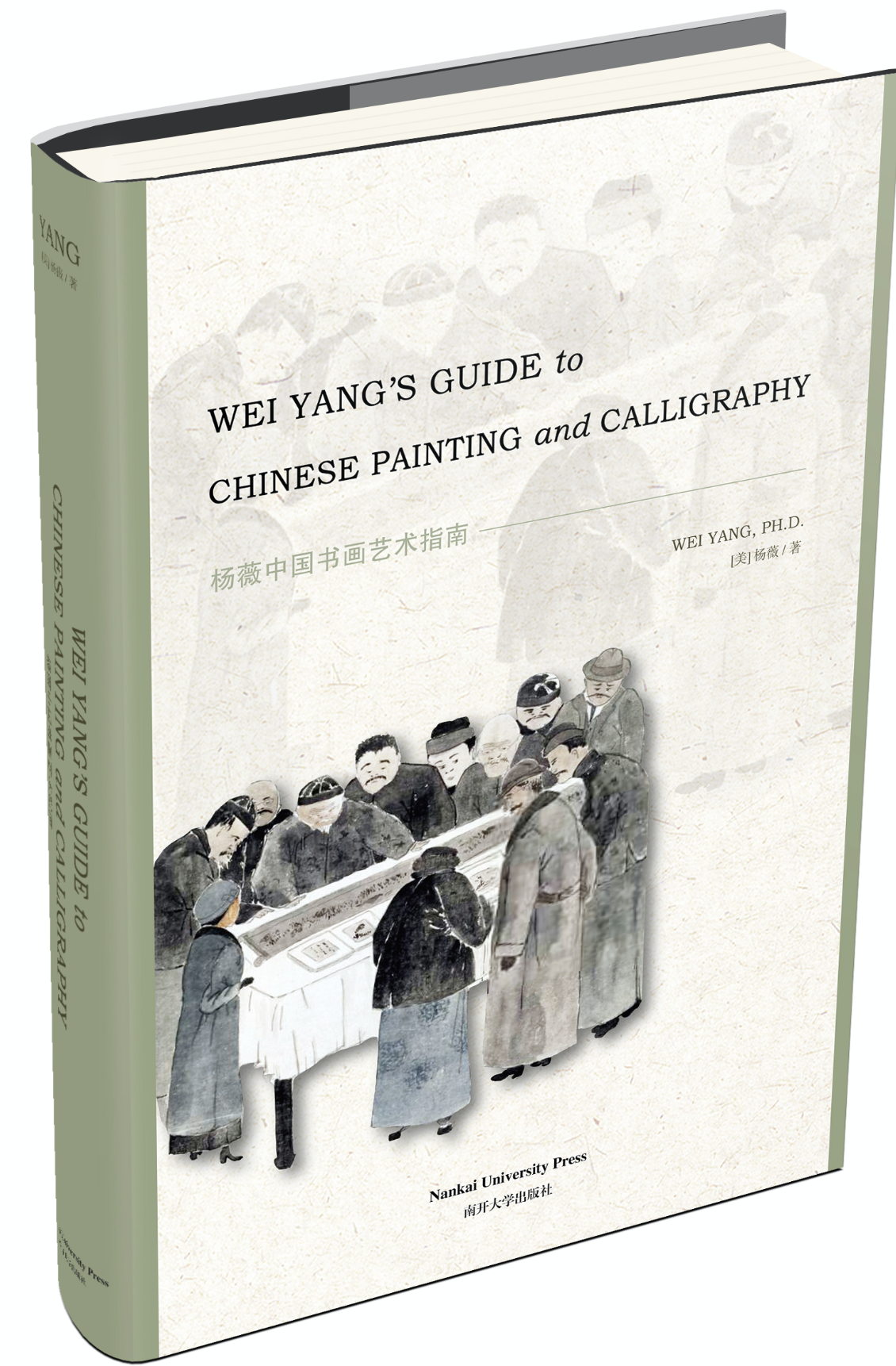CONNOISSEURSHIP & VALUATION
-Most Up-to-Date Guidebook (2022)
Wei Yang’s Guide to Chinese Painting and Calligraphy (Tianjin: Nankai University Press, 2022) provides the most effective guidance on the appreciation and appraisal of Chinese painting and calligraphy prior to 1911. Derived from Dr. Yang’s study notes, this guidebook offers a carefully designed road map for the study of Chinese fine arts. It introduces the fundamental framework for Chinese fine arts and Chinese traditional visual aesthetics, discusses issues concerning identification, dating, ranking criteria, authenticity, and the guidelines for the connoisseurship of classical Chinese painting and calligraphy. The chapter on the Basics focuses on key physical features of a Chinese painting (medium, format, signature, seal and iconography) to help determine its authenticity. Other chapters centering on leading painters, their original works, artistic affiliation signature and seals, and popular fakes, artistic movements, schools of the time, references, and market trends, provide a workable guideline to the assessment of quality and the appraisal of classical Chinese painting and calligraphy. Entries on the biography of leading painters, the stylistic analysis of each’s signature features and key references offer a quick access to the needed background information on the subject artist and advane further investigation.
Overall, this guidebook removes the mystery from understanding and appraising classical Chinese painting and calligraphy and guides the reader through a logical, comprehensive system of professional judgment.
SIGNATURE & SEAL
-Attribution & Authenticity
Cahill, James. An Index of Early Chinese Painters and Paintings: T’ang, Sung and Yuan. (Berkeley, CA: University of California Press, 1983).
Li, Chu-tsing, et al., eds. Artists and Patrons: Some Social and Economic Aspects of Chinese Painting (Kansas City and Seattle: Nelson-Atkins Museum of Art, University of Washington Press, 1989).
Lu Fushen. Jinxiandai shuhuajia kuanyin zonghui (Signatures and Seals of Modern and Contemporary Chinese Painters and Calligraphers), 2 vols (Shanghai: Shuhua, 2002).
Murck, Alfreda. Poetry and Painting in Song China: The Subtle Art of Dissent(Cambridge, MA: Harvard University Asia Center, 2000).
Ni Wendong. Ershi shiji Zhongguo shuhuajia yinkuan cidian (Signatures and Seals of Artists of the 20th Century), 2 vols (Xi’an: Shenzhen Zhonghua Commercial Press, 2008).
Shanghai bowuguan. Zhongguo shuhuajia yinjian kuanshi (Signatures and Seals of Chinese Painters and Calligraphers), 2 vols. (Beijing: Wenwu, 1987).
Yu Jianhua. Zhongguo meishujia renming cidian (Dictionary of Chinese Painter’s Names) (Shanghai: Renmin meishu, 1981).
Zhong Yinlan. Zhongguo jiancangjia yinjian daquan (A Complete Collection Seals of Chinese Collectors), 2 vols. (Nanchang: Jiangxi meishu, 2008).
PAINTING TECHNIQUES
-Criticism & Craftsmanship
Cai Jinshun. Shanshuihua cunfa (The Shading Techniques in Landscape Painting) (Tianjin: Yangliuqing, 2014).
Dong Zuobin. Zhongguo nianli zongpu (A Complete Index of Chinese Calendar), 2 vols. (Hong Kong: Chinese University Press, 1960).
Fang Shiming. Zhongguo lishi jinian biao (Chronology of Chinese History), rev. ed. (Shanghai: renmin, 2007).
Wu, Hung. The Double-Screen: Medium and Representation in Chinese Painting (Chicago: The Chicago University Press, 1996).
Yu Fei’an. Zhongguohua yanse de yanjiu (A Study of Colors in Chinese Painting) (Beijing: lianhe, 2013).

